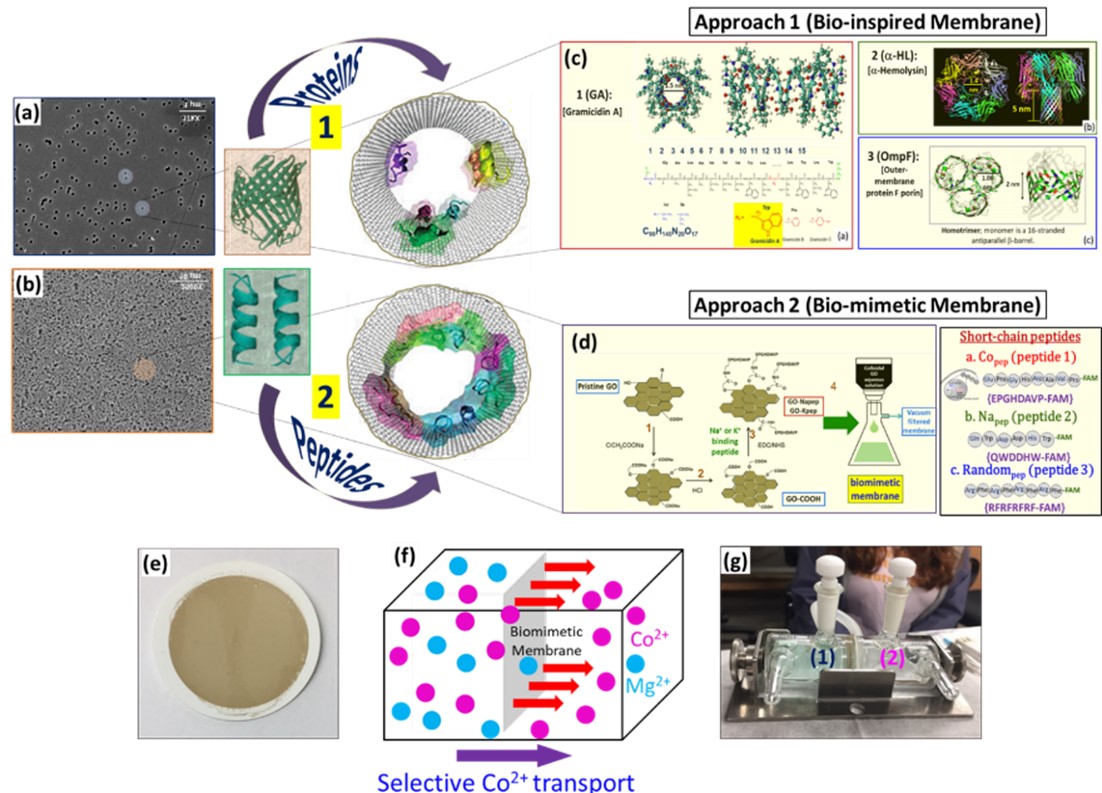Recent advances in synthetic membranes allow their use in fields as diverse as food and agriculture, biotechnology, industrial wastewater treatment, and potable water production. Among the newly developed technologies, nanofiltration for liquids and more particularly for desalination of seawater or saline aquifers are actively pursued. However, current solid-state membranes performance is limited, which calls for the development of novel formulations for membranes offering both high permeability (ion and water flux) and ion differentiation (selectivity), usually considered antagonist features. We report the development of hybrid nanoporous membranes made of solid-state polymeric carbonate track-etched (PCTE) thin films in which biological ion channels such as Gramicidin A (GA), alpha-hemolysin (α-HL), and outer-membrane protein F (OmpF) aquaporin are confined and graphene oxide (GO) conjugated cobalt ion selective binding peptide motifs (Copep) are adsorbed, referring as bioinspired and biomimetic approaches, respectively. These solid-state nanoporous membranes are attracting widespread attention since they offer scalability, mechanical robustness, selectivity, controlled pore dimension and shape, for water sustainability. The ion permeability, ion diffusion coefficient and selective ion recognition are evaluated via nanofiltration, cell diffusion kinetics, and UV-Visible absorption spectroscopy to gain insights into the role of key performance parameters including effective ion confinement in track-etched pores, rich surface chemistry, and peptide-induced channel for selective ion transport. These findings provide new avenues for artificial ion channels by synergistic combination of eco-friendly material design such as GO enabled by bio-molecular recognition chemistry.

